PGA Tour: Tour Wins and Career Winnings Make's Thaworn Wiratchant Number One On The Asian Tour24/11/2012
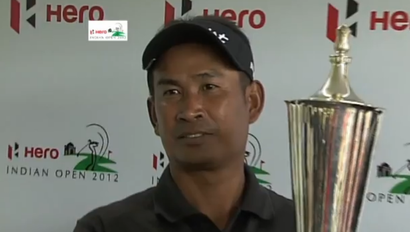 With the most wins (15) and second in career earnings with nearly US $3.6 million (ranked 2nd) on the Asian Tour makes Thaworn Wiratchant the best golfer playing full time on the Asian Tour. Sure there is compatriot Thongchai Jaidee who himself has won 13 times on the Asian Tour and other famous Asians who have won and made a mark on the European and PGA Tours. But Thaworn is a veteran professional that most young Asian players look up to. The main reason they do is the 45 year old has been out on tour since 1987 (384 official tour starts) and has learnt how to do two things very well. First he's a low scoring machine; he has lead the most birdies made in a year category in 2005, 2006 and the last six years straight, and secondly he knows how to win tournaments! He has done this so effectively with arguably the most unorthodox looking swing out there on tour. Thaworn’s full swing has been described as having more “planes” than Thai Airways. So his swing is not aesthetically what most swing coaches teach but it produces a predictable ball flight and it’s repeatable. But he doesn't win only because he is a birdie machine but because he is without doubt the best short iron, wedge and putter on the Asian Tour which makes him one of the best scrambler and low scorer on the Asian tour as well. With US $628,131.00 in winnings this year and lying second to Australian Marcus Fraser (US $28,000.00 behind) on the 2012 Asian Tour’s Order of Merit, Thaworn is in line to win his second Order Of Merit. He last won it in 2005 when he had four victories that year on tour. He has already won three times this year and I wouldn't bet against him winning again especially when two of the last three tournaments are being held in Thailand. 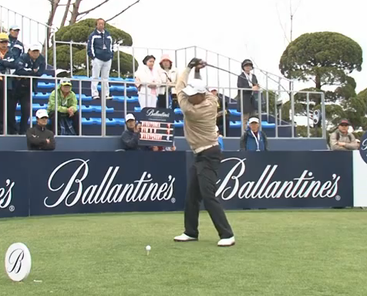 The odds of him clinching the Order Of Merit title have come down when Marcus declared that he would be playing the major tournaments in Australia and not enter the last three tournaments in Asia as the dates clash. The last three events on the Asian Tour are the Kings Cup next week worth US $500,000.00 followed by the Thailand Golf Championship US $1,000,000.00 and the season ending Iskandar Johor Open US $2,000,000.00. Now with that much cash up for grabs it still leaves room for someone like India's Gaganjeet Bhullar ranked 4th and US $205,206.00 behind to mount a challenge. In one of his interviews after winning the Queens Cup earlier in the year he said; “I regard my golf career as a job and put my best effort into it”. He also went on to say that when not on the tour he practices from dawn to dusk every day. When asked why he never tried to change his self taught swing his comeback was “My swing served me well as an amateur (won the Thailand and Singapore Amateur in 1987) as it has during my professional career. Why would I use someone else’s swing”? Hard to argue with that! Have a look at how his statistics stack up below in the table and it tells you why he has been so successful for such a long time. And guess what; they are so close to the Pro Tour Golf College Success Scoring Code of 12-4-2 (12 pars, 4 birdies, 2 bogies average per round) that all students at PTGC understand and keep moving toward at training every day. Over the last ten years Thaworn has maintained his game by sheer hard work and sharpening his game so that in the last nine holes of the tournament he just hits the required shot and does not focus on how his swing looks.
PTGC Co-Director Lawrie Montague and I watched Wiratchant shoot 61 (9 under) in the 1st round of the ISPS Handa Singapore Classic in April and it was a “clinic” that he put on for the gallery that day. It was the old adage of “Not how but how many” that came to mind as we watched a golfer who had supreme control of his golf ball. If you get a chance to watch him play do yourself a favour, it will be entertaining for sure!! Thanks for reading our blog and please like it and share it with your friends if you found it of value. David Milne and Lawrie Montague - Pro Tour Golf College Your Success On Tour is Our Business  Have you had a successful year on the golf course so far? Has your game lived up to your expectations? Based on what you now know about your game what will you do differently next year? Because if your strategy for improvement didn't work out the way you wanted it to, it will be helpful to start thinking about what you’ll do differently now. Then you can decide on how you will go about improving it. We use a simple improvement strategy that will help you to start on the path to golf improvement in a simple-no fuss way. Improvement doesn't have to be difficult and frustrating and with the simple structure I’m about to share with you, game improvement is more than possible. Golf Skills Assessment Start by adding up all your competitive rounds for the past year and work out your current competitive score average. Make sure you add every golf score into the equation, not just the good ones. What does it look like? Next do a performance review of some of the areas of your game by looking at the basic statistics behind your golf score average. Work out your percentages for the following statistics over the past year to determine your current position. You can work out which statistics are the most important for you. The image below is an example of some of the basic statistics you can look at in your game or you can add others. What does it look like?  Crystal Ball View Now make a prediction. Decide what you would like these areas of your game to be by moving each guide to a different place on the scale. Now be realistic about this because it’s important and the way we teach our students at Pro Tour Golf College to work it out is to apply the divide by 2 rule. The divide by 2 rule say’s that you take your first prediction and halve it. So if you wanted to improve your competitive score average by 5 shots in the next 12 months, then divide 5 shots by 2 and aim for a stroke average improvement of 2.5 strokes over 12 months. If you have a current competitive score average of 77 then your aim is to have a competitive score average of 74.5. We have found that the divide by 2 rule helps to keep your predicted improvement levels in your game right on track. Remember improvement grows slowly and the motivation to try and achieve a big leap in performance usually leads to disappointment. If you exceed your prediction by the end of 12 months great, but if you don’t you’ll be close using our strategy. Ok so now you should have a pretty good idea of your performance targets for the New Year. The next step in our process is to work out how you will improve the skills that will enable you to reach your new performance targets. The key ingredient here is time management. You need to determine how much time you have available each week to work on your improvement strategy. Then you will have to decide which skills have the greatest influence on lowering your competitive score average and which will have less influence. You will need to prioritize your time so that your key skills receive the attention they need. How do you do this? Weakest Skill Ranking Start by ranking your weakest most important skills to your strongest. Which skill once improved would make the most impact on lowering your competitive score average? For example, would you have a lower score average if you putted better? Then again, what if you wedged your approach shots closer to the hole, would you have shorter putts therefore enabling you to hole more putts? These are important questions that you need to consider as you develop your improvement plan. Every golf skill you practice requires lot’s of repetitions to strengthen and reinforce it into a dependable habit. This is the basic requirement for improvement in golf and how the repetitions will be performed is just as crucial if you’re going to make steady progress towards your goals. So let’s say that you have 15 hours per week available to practice your golf skills outside of playing on the golf course and golf lessons. You need to decide what percentage of time will be devoted to technical development of your golf skills and what percentage of time is targeting development.  One Master Not Two When you swing your golf club you either have a focus on improving your technique or improving your ability to hit your ball to the target. You cannot and should not focus on the two together. Golf stroke repetitions are either technical in nature or targeting in nature. Now decide what percentage of your overall practice time during the next week will be focused on technical improvement and what percentage will be focused on targeting development in your short-game and long-game skills. To perform optimally on the golf course you need a high level of target awareness - not golf swing awareness and the way you go about practicing your golf skills will determine to a great extent how successful you are on the golf course - especially when it matters. There’s an easy way to slow your progress. Focus on your swing technique whilst you try to play. This is a guaranteed confidence destroyer that will set your development back months. Keep your technical practice on the golf range or practice fairway and preferably practice hitting your golf shots into a practice net.  How do you determine whether a golf skill needs more technical work or more targeting work? When you perform a golf skill in a tournament your level of confidence in your ability to produce the shot is closely tied to your competence. The more competent you are the more confident you’re likely to be. Your skill levels will move from being very conscious of what you are doing in your technique in the early stages of development to not being very aware of your technique at all. This is the goal and it is described as ‘unconscious competence’ and your practice should always have this goal in mind. How do you get to this level in learning golf skills? Technical practice will keep you in the 'conscious competence' stage until you have executed enough golf strokes that you make the shift to the 'unconscious competence' stage.
Remember this is the goal of practice. One last thing. Make sure that you work closely with a competent golf teacher/instructor to help you to make the changes that will lead you to lower golf scores in tournaments. It is no point practicing to improve if you are using flawed golf stroke improvement strategies. Your golf instructor can help you to develop an effective plan for improvement over the next 12 months that focuses on improving your weaker skills and keeping you motivated when you're going through the tough periods. The long hours are necessary to develop strong dependable habits so it is vitally important that you stay the course and with a bit of luck and hard work you should be shooting golf scores that are on or even ahead of your prediction. The best of luck with it and thanks for reading our blog and sharing it with your friends. Lawrie Montague and David Milne - Pro Tour Golf College Your Success On Tour is Our Business " I don't care how good putting surfaces are these days, this is impressive, bordering on insane. Especially the inside 3' number." - Geoff Shackelford (Golf Writer)  We recently came across some powerful putting statistics that Luke Donald posted on twitter about his putting performances inside 10 feet on the PGA Tour this year and we wanted to share them with you. These statistics break down his percentage of putts made from 3 feet to 10 feet putting on the PGA Tour this year. They are pretty impressive! He's set the benchmark for what's possible so why don't you see how you putt through next year and then compare your statistics to these. You might do better! Please enjoy today's blog post. How to Practice Golf: Swing Plane Drill is a short golf and tips video on how to practice golf swing plane for average to advanced golfers. Hosted by leading Australian golf teacher David Milne from the golf college www.protourgolfcollege.com this golf lesson video will show you how to practice golf to lower your golf scores by developing a consistent practice method that leads to lower golf scores through an improved golf swing plane. How to Practice Golf: Pitch Like a Pro is a short golf and tips video on how to practice golf pitch shots for average to advanced golfers. Hosted by leading Australian golf teacher David Milne from the golf college www.protourgolfcollege.com this golf lesson video will show you how to practice golf to lower your golf scores by developing a consistent practice method that leads to lower golf scores through improved pitch shot skills. How to Practice Golf: Wedge Shot Mastery is a short golf and tips video on how to practice golf approach wedge shots for average to advanced golfers. Hosted by leading Australian golf teacher David Milne from the golf college www.protourgolfcollege.com this golf lesson video will show you how to practice golf to lower your golf scores by developing a consistent practice method that leads to lower golf scores through improved approach wedge skills. How to Practice Golf: Chip Like a Champion is a short golf and tips video for average to advanced golfers. Hosted by leading Australian golf teacher David Milne from the golf college www.protourgolfcollege.com this golf lesson video will show you how to practice golf to lower your golf scores by developing a consistent practice method that leads to lower golf scores through improved green-side scrambling skills.  It costs a lot of money to play full time as a professional golfer. I was discussing this subject recently with one of our students at Pro Tour Golf College and he explained to me that he read a tweet from one of the European tour players who had suggested that it costs him somewhere between 100,000 and 200,000 pounds per year to play on that tour. So we did the sums to work out where the expenses were and without too much trouble we got over 100,000 pounds for travel, meals, accommodation, caddy expenses etc. for just thirty weeks on the road. Turning professional is a huge financial commitment first and foremost and shouldn't be taken lightly. Turning Professional - Are You Ready? Many amateur golfers turn pro when they think they’re ready because they have had a reasonable degree of success in amateur tournaments and basically had enough of playing the same amateur tournaments every year. They are often encouraged to make the leap to pro golf by family and friends and for many young amateur golfers that turn professional this hasty decision can have dire financial and emotional consequences. The golfers who turn pro are normally high ranking amateur golfers who have been travelling to amateur tournaments on the sponsorship of amateur golf bodies and/or their parents. 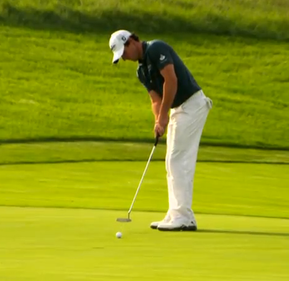 Rory McIlroy like many of the best amateurs golfers benefited from amateur golf associations paying for most of his travelling and accommodation expenses only after significant financial investment from his parents. This allowed him to gain experience playing in tournaments without the normal pressure of expenses that he would be exposed to. When amateurs make the decision to turn pro they have to secure significant sponsorship from family or friends to help them to travel from one tournament venue to the next for the best part of a year. We have known of quite a few male and female golfers who took the parents credit card on tour with them and racked up enormous bills as a results of not being able to make cuts and checks on a professional golf tour. Even Justin Rose who as an amateur finished 4th in the 1998 Open Championship missed his first 21 cuts in a row as a professional! So how do you know when it is time to make the leap from amateur golfer to professional golfer? By now many of you who read our weekly blogs will know of our golf success formula at Pro Tour Golf College;  Well, we have a simple test based on years of studying the results from minor through to major professional golf tours. You will need to pass this test if you want to seriously consider playing professional golf and succeed at it! Before you decide to turn pro you need to look very closely at your competitive score average over the previous 12 months to determine whether your game is good enough to turn professional. What was you competitive score average in tournaments? The Three Games of Professional Golf At Pro Tour Golf College we teach our students to understand that on each of the 4 days of a tournament that their game could be rated A, B or C. Below we will explain what this rating means and how it relates to competing successfully on a professional golf tour. We call this "The Three Games of Professional Golf." 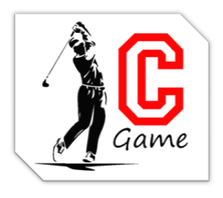 C GAME STANDARD < 75 When you play what you consider your absolute worst golf, when nothing seems to be going the way you want and you just want to get off the golf course and go home with your tail between your legs, your golf score for the day shouldn't be higher than 75. In pro golf you will play a lot of rounds of golf in a year in all types of conditions and on all types of golf courses and the likelihood of you scoring higher than your expectations is that it will happen more times than you will imagine. We call this your ‘high score average’ and it is essential that you keep this score down to 75 or better if you want to be a successful professional golfer. 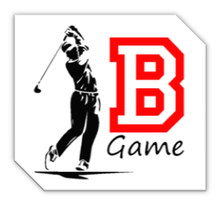 B GAME STANDARD < 72 B Game Standard is your average standard of golf and this standard will be 72 or better. This means that when you are comfortable and statistically maintaining your average level of performance you will play to slightly better than a par standard in golf tournaments. You will need to achieve this standard 60 percent of the time over the course of a year. If your standard for your average game is higher than par then you should seriously consider staying in the amateur game for longer so you can develop your skills and experience further. Since virtually every professional tournament you play in will have a cut of par or better, if you cannot achieve this baseline standard then there is no reason for turning professional as you will not make cuts and prize money. But you will spend money...  A GAME STANDARD < 70 Your A game Standard is the best golf you can play in a golf tournament and this doesn't happen very often in a year. This standard is the lowest score average you can produce over 4 rounds of tournament play and could conceivably be from 10 to 20 under par or even better. When professional golfers win tournaments or finish high up in the money list they are not performing to their average - they are playing a good deal better than it. There is a misconception that the A Game Standard is the standard in professional golf and this is quite simply a long way from the truth. The A Game Standard will produce low putting averages and high birdie averages and you will have fewer bogeys and double bogeys over 4 rounds of golf. Luke Donald had just 14 double bogeys over 1,152 holes played on the PGA Tour in 2012, and nothing worse than a double bogey for the year. Over 4 tournament rounds you might produce one or two rounds that are close to your average but it is likely that you will be playing a lot better than your average over the whole week. Keep in mind that if you play in round one of a tournament and produce a C Game Standard, then you will know that in round two you will have to play to your A Game Standard to make the cut. No cut made-no money made! 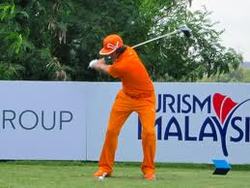 Score Bounce Back Ability This is the reality of professional golf. The trajectory of your golf score average is not linear but more like a wave motion. When you produce a high score average you must produce a low score average to stay in the game. This is normal bounce back mentality of professional golf and one of the key mental skills that you must develop to be competitive on a professional golf tour. Have a look at the graph (Below) of the first 6 tournaments Ricky Fowler played on the PGA Tour in 2012. You can see that he started with 9 competitive rounds that were around his competitive score average and then threw in a C Game score of 76. Notice the very next round is back around his average which unfortunately in this case wasn't low enough that week to make the cut at the Pebble Beach Pro Am. Ricky played in 23 tour events on the PGA Tour in 2012 and made the cut in 20 of the events he played in (87 percent) and earned over 3 million dollars. This graph perfectly describes the inconsistent nature of competitive scoring in tournaments and every professional golfer has a profile that looks similar to this. The only difference; how low your competitive score average is. The Bottom Line The professional game is very different to amateur life as many accomplished amateurs very quickly realize. Where they might have been in the top 10 percent of amateurs in their country, when they turn pro they will more than likely will be in the bottom 90 percent of professionals. We have also noticed that the biggest difference between the amateur golfer mind-set and pro golfer mind-set is that when amateurs don’t play good enough in an amateur tournament they can forget about it and move on to the next event. We call it the "Bad Score-Good Score Attitude." Professional golfers don’t have the luxury of forgetting about it this way because it always costs them money. When they have a C Game Standard they have to find an A Game Standard the next day to stay competitive. This is professional golf and where you need to brutally honest about the standard of your game currently. Professional golf is business, and business is always about the bottom line. If you can't produce the standard required to compete, then you will go broke. The following Pro Tour Golf College model describes what we call "The Pro Standard Test." Using this simple model you can easily determine where your game is currently and it will help you to decide whether it is good enough now to compete in the pro ranks now or wait until you can play a little better in the three games.
Remember this is the minimum standard required to compete on a professional golf tour. When you watch golf on television you're watching professionals playing to their A Game Standard. I hope this helps you to make an informed decision regarding a career as a professional golfer. If you have any questions about playing professionally then please feel free to contact us at [email protected] And if you enjoyed the article then please help us to spread the message to serious golfers by sharing it with your friends via email, Twitter, Facebook and other medias. Lawrie Montague and David Milne - Pro Tour Golf College Your Success On Tour Is Our Business PGA Tour: Tour Golfer Goes from Near Death Experience to Winning His First PGA Tour Event16/11/2012
 What an incredible story for Charlie Beljan last week at the Children Miracle Network Classic on the PGA Tour. A rookie on tour, the twenty eight year old came into the final tournament of 2012 with his job on the line. Recently married in March 2012 and also became a father just seven weeks ago, Beljan arrived at the penultimate tournament (McGladrey Classic) of the 2012 PGA Tour season in 160th position on the money list. As only those from position 126 and 150 on the PGA Tour money list go straight to final stage of tour school he was looking at booking his flight to the 2nd stage in Houston to try and win his card back for 2013. It was at the McGladrey Classic that Beljan’s form which had not been good (missed 5 cuts of the previous six tournaments) was on the improve. He finished ten under and tied for 10th position picking up US $92,000.00. This elevated him into the top 150 on the money list and guaranteed him a place into the final stage of tour school. But let’s go back to 2002 when he won the US Junior at the Atlanta Athletic Club winning the title on the 20th hole. As an amateur he won the Arizona State title three times and was named Arizona Player of the Year twice. He attended the University of New Mexico and graduated with a degree in communication in 2007. Beljan turned professional the same year and played the Gateway Mini Tour until 2011. He won eight times and the overall money title on two occasions. 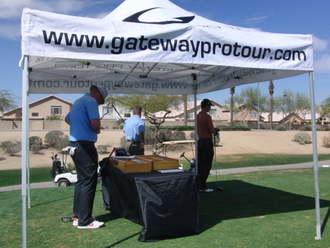 During this period he qualified to play in two US Opens, the first at Bethpage Black in 2009 where he met his favourite athlete (Tiger Woods) in the players’ lounge and the previous year at Torrey Pines where Tiger won. He missed the cut in both events. At the end of 2011 he entered to play the PGA Tour’s tour school and was one of only nine players who earned their 2012 card playing all three stages. With scores of 70, 73, 66, 73, 68 he placed Tied 13th in the final stage and gained playing privileges on the “Big Show”. He arrived at the Children's Miracle Network Hospital Classic which is the final tournament of the 2012 schedule and needed to finish in 1st or 2nd position to get into the top 125 ranking and keep his PGA Tour card The tournament course is the Magnolia Golf Club in Lake Buena Vista Florida where Disney World is situated. To get to the golf club players drive under Disney’s sign that reads “Welcome to Disney World where dreams come true.” Beljan’s opening round is a bogey free 4 under 68 and trails leader Charlie Wie by four shots. The second round is where things started to happen! He eagles the first hole and by the 9th hole is 5 under for the round and leading the tournament at 9 under. 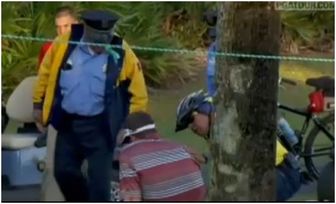 It was at this point when the TV camera’s picked him up and the commentators where voicing their concern regarding Beljan’s situation. He was being attended by medical staff as he sat on the grass by the side of thefairway. They reported he had trouble breathing, his heart rate was elevated to a dangerous level and his blood pressure was extremely high! Amazingly through all this he was 9 under for the round through 14 holes and a late bogey on the 17th added up to a 64 and the lead after the completion of the 2nd round. Beljan was taken to hospital immediately. After extensive test doctors could not find anything that was causing his condition out on the course and diagnosed it as a panic attack.  Beljan described the day as “not enjoyable” and “certain I was going to die.” On Saturday and Sunday the symptoms returned but somehow he prevailed winning by two shots for his maiden win and securing his future on the PGA Tour for the next two years. With his win he is ranked in 63rd position on the money list with US$1,373,528.00 and that gets him into every tournament (except the US open, British Open, PGA) next year including the Masters and the Players Championship. At the interview he was asked what was the one thing that got him over the line for the win. His answer was “I have always believed in myself, I’m a fighter and never give up”. He added “I don’t think of swing on course, I just hit shots.” He is 2nd in driving distance averaging 311.6 yards behind Bubba Watson and has a scoring average of 70.98. Well last week at Disney World Charlie Beljan’s dream did come true! We wish him all the very best in his future career and will follow it with interest. David Milne and Lawrie Montague - Pro Tour Golf College You Success On Tour Is Our Business  The most important statistic in professional golf and top amateur golf is score average in tournament competition. This simple statistic defines your ability to play the game of golf and above all else is the one statistic that is completely reliable day-in-to-day-out. Score average is the essence of tournament golf and every week we see it at play as golfers with a low average for the week earn big rewards and golfers with a high one earn nothing. It is black and white. Your competitive score average determines whether you will be successful at playing golf or not. Incredibly many elite level golfers pay little attention to it and would rather spend their time working on perfecting their golf swing technique because their logic say’s that “somehow and someway this swing change will lead to better performances in golf tournaments.” This is flawed logic.  If more ambitious amateur and professional golfers actually focused their energy on lowering their competitive score average they would more than likely look at their game in an entirely new light. You would notice statistics that actually travel under your radar that are likely to have a bigger impact on your game than trying to perfect your golf swing or similar. Your score average is a result of many factors coming into play however the easiest way to break it down to find the primary factors that would lower your score. In our experience at Pro Tour Golf College the following statistics are critical in evaluating performances on the golf course. Before you start to work on specific areas of your game you need to determine which part/s of your game are being affected the most. 1. How many pars do you produce on average per round? 2. How many birdies do you produce on average per round? 3. How many bogeys do you produce on average per round? 4. How many ‘others’ do you produce on average per round? The following table shows Luke Donald's key performance statistics for 2012 (excluding US Open, US PGA Championship and HSBC Event in China) and you will see that the these statistics provide you with a glimpse into his steady and consistent game. The statistics I want you to really focus on in the table are the one's highlighted at the bottom of the table. These numbers are the glue that binds his scores together and are usually overlooked by elite golfers searching for improvement in their game which is a BIG MISTAKE!  What the table above shows is the importance of the increasing the amount of pars and birdies in your rounds and decreasing the amount of bogeys or worse. Once you have evaluated your score data this way it is much easier to make a determination about the state of your game you can make a better and more informed decision about which skills are having the biggest influence on your score average. Luke Donald had another great year on the PGA tour and when you get to the core of his abilities you realize that his real skill is his ability to make the right amount of par's, birdies and bogey's in competitive rounds; that is really what makes the difference.
Golf will be a much simpler game to play well and enjoy if you focus on improving your ability to make more pars and reduce the bogeys and others in rounds. I know that seems obvious but the thing that we find interesting with many elite golfers is their complete lack of understanding between how a result is generated and the process that would lead to improved results. Take the time to find out how many par's, birdies, bogey's or worse you're making on average and put a plan in place to improve them and you will discover that lowering your competitive score average will be easier than you could have ever imagined. Thanks for supporting our blog, liking it and sharing it with your friends. We really appreciate it. Lawrie Montague and David Milne - Pro Tour Golf College Your Success On Tour is Our Business |
Archives
June 2019
|
Proudly Supported By
Copyright © 2011 - 2018 Pro Tour Golf College
Website Managed By Golf Performance Media
All Rights Reserved
Website Managed By Golf Performance Media
All Rights Reserved


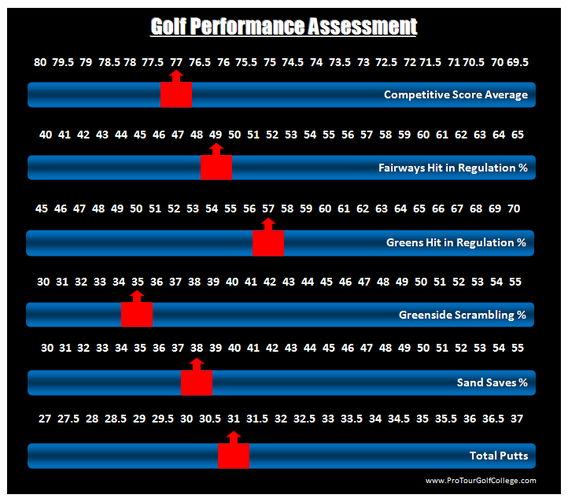

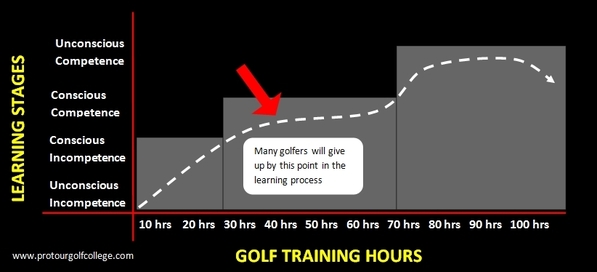
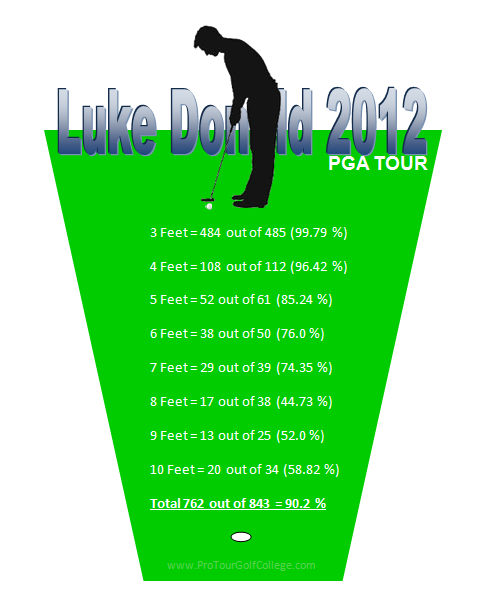


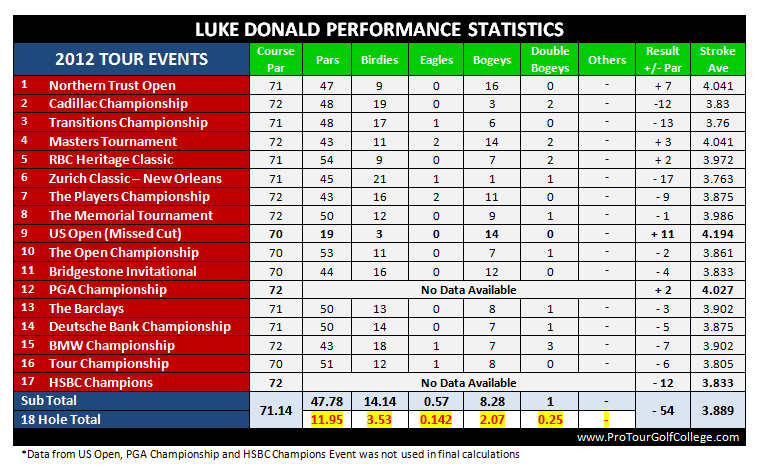
 RSS Feed
RSS Feed



